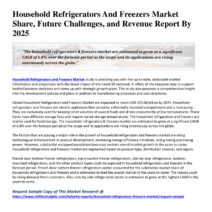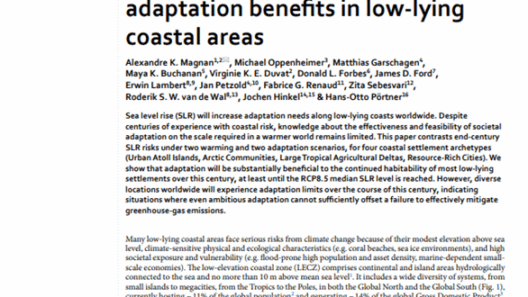The phenomenon of rising sea levels often sounds like a distant concern, something that seems far removed from our everyday lives. But have you ever pondered how these changes to our oceans could profoundly alter the world around us? The implications are not just limited to coastal towns; they ripple through ecosystems, economies, and human health. Understanding the environmental impact of higher ocean levels is essential, as it presents a crucial challenge we must learn to navigate as stewards of the planet.
To grasp the significance of rising sea levels, we must first explore their primary causes. The two most pressing factors are thermal expansion and the melting of polar ice. When ocean waters warm, they expand, thereby increasing their volume. Concurrently, glaciers and ice sheets are receding at alarming rates. As ice diminishes, the water previously stored in these frozen formations enters our oceans, exacerbating the rise. The urgency of addressing these issues cannot be underestimated, as even a modest increase in sea levels can have devastating repercussions.
How exactly does this elevation impact our environments? Let’s delve into the critical aspects.
Coastal Erosion and Habitat Displacement
As sea levels rise, coastal erosion becomes more pronounced. Shorelines that previously appeared stable succumb to the relentless encroachment of the sea. This erosion not only affects human settlements but also threatens delicate ecosystems like mangroves, wetlands, and coral reefs. These habitats serve as nurseries for countless marine species, and their loss has dire consequences for biodiversity.
In essence, as land is consumed by the advancing waters, many species find themselves displaced, unable to migrate or adapt to the shifting landscape. The intricate balance of these ecosystems is disrupted, leading to a cascade of ecological consequences. In regions where this phenomenon occurs, one must ask: what happens to the flora and fauna that call these habitats home? The challenge lies in preserving not only human infrastructure but also vital ecological systems.
Saltwater Intrusion: An Unseen Peril
Higher ocean levels introduce another serious concern: saltwater intrusion. As sea levels rise, saltwater begins to infiltrate freshwater aquifers located near coastlines. This contamination of drinking water is particularly pertinent in regions that rely on groundwater supplies. Increased salinity can render water unsuitable for irrigation, threatening agriculture and food security. Furthermore, it can adversely affect freshwater fish populations, creating a ripple effect that extends into the entire food chain.
Imagine a scenario where entire communities are at risk of losing access to clean, potable water. How would we adapt? This is a question that necessitates immediate exploration, as the consequences are both urgent and far-reaching. Innovative solutions such as desalination or rainwater harvesting may offer temporary relief, but they come with their own environmental costs and technological challenges.
Changing Ocean Chemistry and Marine Life
The rise in sea levels is also linked to notable alterations in ocean chemistry, particularly with respect to ocean acidification. Higher levels of carbon dioxide in the atmosphere are absorbed by the oceans, leading to a decrease in pH levels. This phenomenon poses a significant threat to marine ecosystems, especially to calcifying organisms such as corals and shellfish that rely on calcium carbonate to build their shells and skeletons.
The ramifications extend beyond these individual species. Coral reefs, which are often dubbed the “rainforests of the sea,” are biodiversity hotspots. Their degradation leads to the loss of habitat for myriad marine organisms, further upsetting the intricate web of life that exists beneath the waves. As coral reefs struggle to adapt to the changing conditions, we must consider: what steps can we take to safeguard these vital ecosystems? This challenge demands a multifaceted approach involving conservation efforts, sustainable fishing practices, and restoration initiatives.
Impacts on Human Health and Societal Structures
The environmental changes stemming from rising sea levels do not occur in isolation; they also create significant public health risks. Flooding and storm surges associated with higher ocean levels can overwhelm sewage systems, leading to the contamination of water supplies with harmful pathogens. The spread of waterborne diseases can pose immediate threats to communities, particularly in regions already vulnerable due to lack of infrastructure.
Moreover, the displacement of populations caused by rising seas can lead to “climate refugees,” individuals forced to abandon their homes in search of safer ground. Such migrations can strain resources in host communities, leading to socioeconomic challenges that extend far beyond the initial environmental impact. The question arises: how can we build resilient communities that are prepared to face these challenges head-on?
Toward Solutions: Innovation and Advocacy
Rising sea levels may present daunting challenges, but they also offer opportunities for innovation and advocacy. Cities are exploring “nature-based solutions” such as restoring wetlands that can absorb floodwaters or constructing seawalls that mimic natural barriers. Governments and NGOs are starting to push for policies that recognize the value of preventative measures and prioritize sustainability. Engaging local communities in decision-making is crucial; meaningful solutions must consider the voices of those directly impacted.
In conclusion, the impact of rising sea levels on the environment is profound and multifaceted. From coastal erosion and habitat displacement to saltwater intrusion and changing ocean chemistry, the challenges posed are both pressing and complex. However, through awareness, collaboration, and innovation, we can embark on the journey toward mitigating these effects. The question remains: will we rise to the challenge and safeguard our planet for future generations? Only time, and our collective action, will tell.







